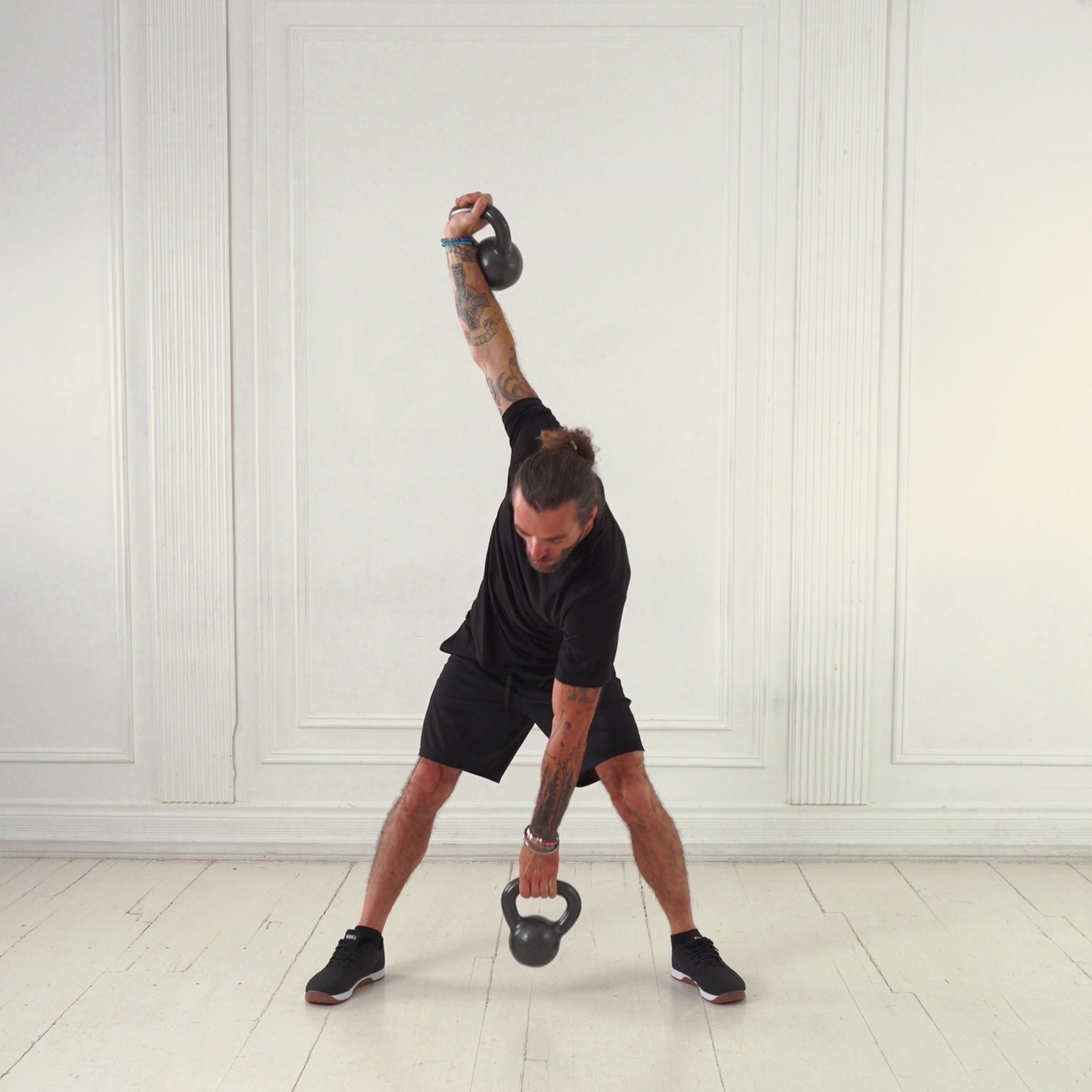PVC Windmill
A mobility exercise with a PVC pipe that targets obliques, shoulders, and core to improve thoracic spine rotation, hip hinge, and stability; used in warm-ups for better flexibility and movement preparation.
About Exercise
Equipment
Others
Difficulty
2/5 • Beginner
Primary Muscle Groups
Obliques
Secondary Muscles
Glutes, Lower Back
Accessory Muscles
Lats
Popularity Score
5
Goals
Training Style
Setup Requirements
Requires Rack
No
Requires Bench
No
Requires Spotter
No
Space Needed
Small
Noise Level
Low
Muscle Breakdown
View Muscle MapObliques
9/10External Obliques, Internal Obliques
Shoulders
7/10Medial Delts
Abs
6/10Transverse Abdominis
Glutes
4/10Glute Medius
Lower Back
3/10Erector Spinae
Lats
2/10Programming
Typical Rep Range
5-10 reps
Rest Between Sets
30-60 seconds
How to Perform
Stand with feet wider than shoulders, knees slightly bent. Place PVC pipe across upper back with wide grip, palms forward.
- Hinge at hips, pushing hips back while keeping back straight.
- Bend laterally toward one leg, rotating torso so opposite shoulder lifts.
- Reach free hand toward floor or inside knee if flexible.
- Hold briefly at bottom, feeling stretch in hamstrings and obliques.
- Drive hips forward with core and glutes to return upright.
- Alternate sides for balanced reps.
Coaching Tips
Form Cues
- Eyes follow pipe end
- Hinge from hips first
- Keep core braced
- Neutral spine always
- Rotate through thoracic
- Stable hips square
Breathing
Inhale as you hinge and bend; exhale as you return to start while bracing core.
Tempo
3-1-3
Range of Motion
Hinge until torso is parallel to floor or comfortable stretch; rotate thoracic spine fully without lumbar arching.
Safety
Safety Notes
- Avoid if acute back pain
- Stop if dizziness occurs
- Use wall for support if unstable
- No lumbar twisting
- Progress slowly with flexibility
Spotting
Not required; self-paced mobility drill with no heavy load.
Common Mistakes
- Rounding lower back
- Using momentum
- Shifting hips laterally
- Forcing beyond range
- Neglecting rotation
- Uneven sides
When to Avoid
- Acute shoulder injury
- Lower back strain
- Vertigo or balance issues
Flexibility Needed
- Thoracic spine rotation
- Hip hinge flexibility
- Shoulder overhead mobility
Build Up First
- Basic hip hinge form
- Core bracing awareness
Also known as
Stick Windmill, PVC Mobility Drill, Thoracic Windmill
Found this helpful?
Share your thoughts or help us improve this guide.
Similar Exercises

Dumbbell Windmill
Dumbbells
Obliques

Kettlebell Windmill
Kettlebell
Obliques

Kettlebell Double Windmill
Kettlebell
Obliques

Kettlebell Windmill with Opposite Toe Touch
Kettlebell
Obliques

PVC Side Bend
Others
Obliques

PVC Good Morning
Others
Hamstrings

PVC Overhead Squat
Others
Quads

PVC Around the World
Others
Shoulders

Stability Ball Abdominal Twist
Stability Ball
Obliques

Stability Ball Half Moon
Stability Ball
Obliques


subscribe to our newsletter
Contact Us
hello@trainfitness.aiFind Us
130 Spadina Avenue, Toronto,
Ontario, M5V 0H4, Canada
©2025 All Rights Reserved
